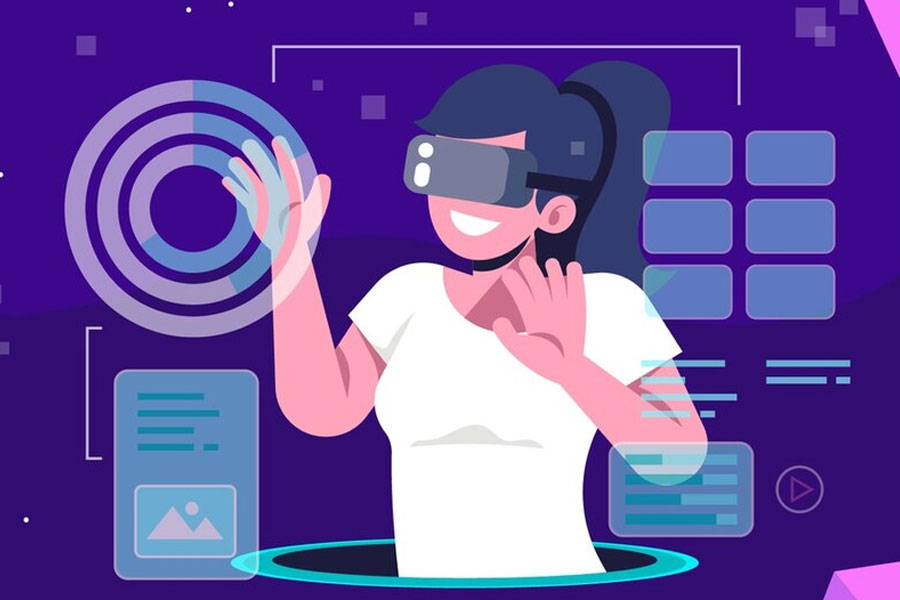Creating Immersive Web Experiences with Virtual Reality (VR)
Imagine visiting a website and feeling like you’re stepping into a different world. Virtual Reality (VR) is making this possible, creating immersive web experiences that go beyond traditional web design. Let’s explore how VR is transforming the way we interact with websites and how you can use it to create engaging, interactive experiences.
What is Virtual Reality?
Virtual Reality (VR) is a technology that immerses users in a simulated environment. By wearing a VR headset, users can experience a 3D world that feels real. Unlike regular websites where you scroll and click, VR lets you explore and interact with digital environments in a more natural and engaging way.
How VR Enhances Web Experiences
Engaging Interactivity
VR takes user interaction to a whole new level. Instead of clicking on links or buttons, users can walk around, pick up objects, and explore environments as if they were there. This level of interactivity makes websites more engaging and memorable.
Immersive Storytelling
Storytelling is a powerful tool, and VR enhances it by making users part of the story. Imagine a travel website where you can explore destinations in VR before booking a trip. Or a history site where you can walk through ancient cities. VR makes stories come alive in ways that text and images can’t.
Realistic Simulations
VR can create realistic simulations for various purposes. For example, online stores can let customers try out products in a virtual space. You could see how furniture looks in your home or test out a car before buying. This realistic experience can help users make better decisions and feel more connected to products.
Implementing VR on Your Website
Choose the Right VR Platform
Several platforms make it easier to integrate VR into websites. WebVR and WebXR are technologies that allow VR experiences to be accessed directly through web browsers. These platforms support various VR headsets and can also work on regular screens, offering flexibility for users without VR gear.
Design for User Experience
Designing for VR requires thinking beyond traditional web design principles. Consider how users will navigate the virtual space. Use intuitive controls and provide clear instructions. Ensure that the VR experience is comfortable, avoiding motion sickness by keeping movements smooth and natural.
Optimize Performance
VR experiences can be resource-intensive, so optimizing performance is crucial. Compress assets like 3D models and textures to reduce load times. Use efficient coding practices to keep the experience smooth. Test on multiple devices to ensure compatibility and performance.
Examples of VR in Web Design
Virtual Tours
Virtual tours are an excellent use of VR in web design. Real estate websites can offer virtual home tours, allowing potential buyers to explore properties remotely. Museums and galleries can create virtual exhibits, making art and history accessible to a global audience.
Educational Experiences
Education websites can use VR to create immersive learning experiences. Students can explore the solar system, dive into the ocean, or travel through time to witness historical events. This interactive approach can make learning more engaging and effective.
Gaming and Entertainment
The gaming industry is a natural fit for VR. Game developers can create immersive online games that draw players into rich, interactive worlds. Entertainment websites can offer VR experiences like virtual concerts or movie previews, providing users with unique and exciting content.
Challenges and Considerations
Accessibility
While VR offers incredible experiences, accessibility is a concern. Not everyone has access to VR headsets or devices. Ensure that your website is still functional and engaging for users without VR equipment. Offer alternative ways to experience content, like 360-degree videos or interactive demos.
Content Creation
Creating VR content can be time-consuming and require specialized skills. 3D modeling, animation, and VR development are complex fields. Consider partnering with VR experts or using tools that simplify the process. Balancing quality and resource investment is key.
Conclusion
Virtual Reality is transforming web design by creating immersive, interactive experiences. From engaging storytelling to realistic simulations, VR offers exciting possibilities for various industries. While there are challenges, the potential to captivate and engage users makes it a worthwhile investment. As VR technology continues to evolve, its impact on web design will only grow, opening up new horizons for creativity and interaction.

